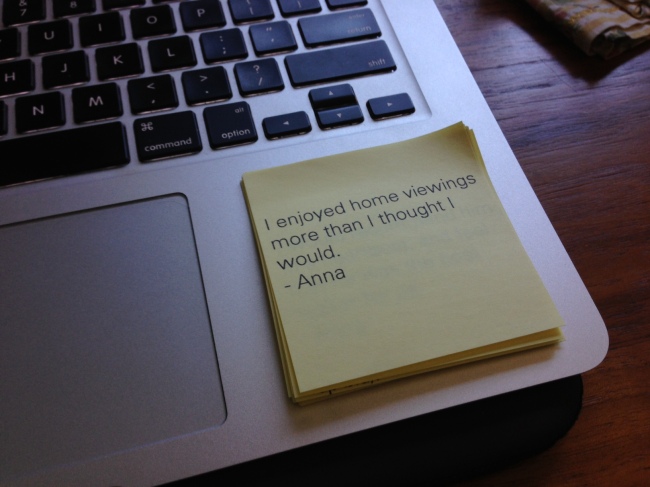June 2013
 In a project with a short timeline or small budget for travel it can be great to add an email portion to cover additional locations– if location matters. I am studying the real estate process right now, and that does vary a great deal from place to place. But we can only travel to a few cities in the month we have for research, so we have recruited participants in 3 additional cities to add color.
In a project with a short timeline or small budget for travel it can be great to add an email portion to cover additional locations– if location matters. I am studying the real estate process right now, and that does vary a great deal from place to place. But we can only travel to a few cities in the month we have for research, so we have recruited participants in 3 additional cities to add color.
It is working really well. Some participants are treating it like essay questions on the SAT– I’m getting Word documents and multiple page answers! Granted, I am incentivizing them well, $75 for 8 questions.
Some tips for this type of research:
– Space the questions out over time so that you can be open to people’s activities or experiences changing. I have a bit more than a month to collect responses, which is a long time in the home rental– and sometimes the home-buying or selling experience.
– Try to build a rapport. It can be difficult because you are in the field while the responses come in, but I try to make it clear that the responses are valuable and inspiring and that I want to know more!
– Collect responses into a Google Doc or other note document, sorted alphabetically, because it can be hard to keep track of stories that come in at different times.
– If you are planning a post-it note affinity diagram, you can include emailed responses by printing onto post-its that have been stuck onto an 8.5×11 piece of paper. Obviously they need to go into the printer “heads first” but most printers can handle this. I am working in InDesign, I printed colored text boxes onto a blank sheet of paper first so that I would know where to position the post-its. During synthesis we will see the email responses side by side with our in-person interviews, but will know, at a glance, which were from email because they are typed text.
